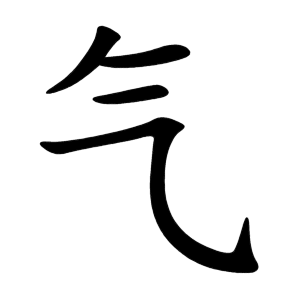气
- energy;
- air;
- vital force;
Etymology
Originally, it is believed to be the base form of 氣, depicting the shimmering heat waves rising on a hot day as an ideogram; however, there are no clear examples of this meaning in oracle bone script, so it remains uncertain. In oracle bone inscriptions, it was mainly used with the meaning "to deliver tribute."
Originally, it was depicted similarly to the character 三 (three), but with a difference: in 三, the three horizontal strokes are all equal in length, while in 气, the middle stroke is shorter. In other words, the current form of 三 was once the form of 气.
Around the Eastern Zhou (Dongzhou) period, to avoid confusion with 三, the upper-left and lower-right strokes of 气 began to be bent, which eventually evolved into the current form.
Additionally, besides its original meanings, 气 was also used phonetically to represent "to beg" or "to request," which led to the creation of the separate character 乞 by omitting the middle stroke.
Usage in Korean
The radical '엄' (meaning "roof" or "cover") is used as a component in forming Chinese characters. A representative character that uses this radical is 氣 (meaning "energy" or "vital force").
In Chinese, the radical 气 is used as a radical to denote gaseous nonmetal elements at room temperature. For example, it appears in characters such as 氫 (hydrogen), 氝 (neon), 氱 (radon), and 氧 (oxygen).
Characters with 气
- 人一弓 (OMN)
- 難人一弓 (XOMN)
- ⿳ 𠂉 一 ⺄
